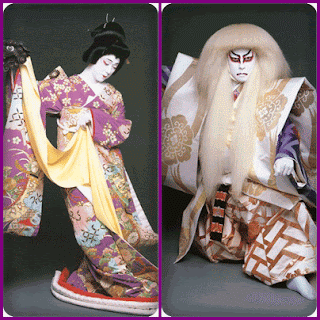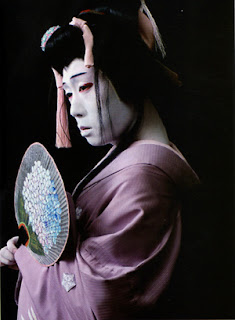Kabuki emerged in early 1600. Kabuki theater art was created by a woman named Okuni from the temple and performed on a dry river in the ancient capital of Kyoto. At that time, Kabuki is a breakthrough that attract people Kyoto which ultimately resulted in the emergence of a growing number of other associations Kabuki. Kabuki is different from that era that we can see today, the difference is mostly used to Kabuki it is a group of female dancers. The dancers are mostly women working as prostitutes off stage. Noting the fact that prostitution is bad for moral values ??in society at that time, the government finally decided to ban women Kyoto to climb onto the stage. But it turns out that the ban had a positive effect for the development of Kabuki, Kabuki because of the emphasis becomes more on skill rather than sheer physical beauty and display more drama than dance. It is put into the path of Kabuki drama. Further development is the emergence of a new profession that is called by onnagata, or male actors who portray women.
Upon entering the 17th century, Kabuki has become the standard form of theatrical entertainment for the public and this triggers the rapid development of Kabuki. At this time also the relationship with the Kabuki Bunraku puppet show to be close to each other in the sense of influencing the development of each.
In the early 18th century, bunraku playwriting developed rapidly, making the Kabuki as if no longer axis of the time. Kabuki actors react by adapting bunraku performances into their performances. In this century also, the cultural center of Kyoto and Osaka moved to Edo, where the female characters are stronger than Edo with Kyoto. This resulted in a role that was originally onnagata is the role of the meek become strong and tough.
In 1868, Japan opened itself to the insertion of the western world. This is a very big influence on the development of Kabuki. One of them is a lot of government regulations that suppress the Kabuki removed. But besides this, Kabuki also have to adapt to a world that has changed. At that time, a symbol of success Kabuki actor is to be able to do shows in front of the Meiji emperor.
Kabuki fail to thrive during World War II because they have lost a lot of actors in the war. In addition, the art of Kabuki faced with its biggest rival in the world of entertainment, namely films and television. But until now, Kabuki remains one of the theatrical art form that we can still enjoy today.









{ 0 comments... read them below or add one }
Post a Comment